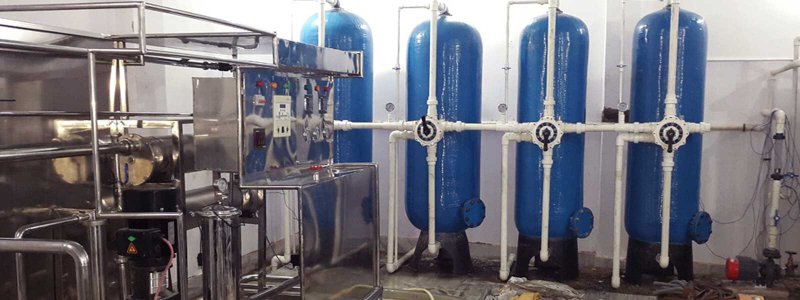RO Plants

Introduction
Reverse Osmosis (RO) is a highly effective water purification process that employs a semi-permeable membrane to eliminate ions, unwanted molecules, and larger particles from drinking water. By applying pressure, the solvent passes through the membrane, leaving the solute behind. This innovative technique is widely used for various purposes, from treating liquid waste to medical applications.
Reverse Osmosis Purifying Water with Precision
Reverse osmosis (RO) is a highly effective water purification process that employs a semi-permeable membrane to eliminate ions, unwanted molecules, and larger particles from drinking water. This innovative technique, which has applications ranging from industrial to residential and scientific purposes, is widely recognized for its role in purifying water. Reverse osmosis works on the principle of applying pressure to move solvent molecules through a semi-permeable membrane from a region of higher solute concentration to a region of lower concentration. The result is the production of clean and pure solvent on one side of the membrane while the solute remains concentrated on the other side.
Reverse osmosis is a fundamental process in water purification, as it effectively eliminates a broad spectrum of contaminants by relying on the principles of osmosis and selective permeability. The importance of this method is underscored by its widespread use in water purifiers to ensure safe and clean drinking water for countless individuals around the world.
Features Of Reverse Osmosis
- Comprehensive Contaminant Removal: RO eliminates a wide range of dissolved and suspended particles, ensuring clean, safe water.
- Compact and Space-Efficient: RO units are relatively compact and fit well in various settings, including home dialysis.
- Long Membrane Lifespan: A typical RO membrane lasts for one to two years before replacement is needed.
- Sterilization Compatibility: Periodic sterilization of the RO system is practical, ensuring purity.
- High Salt Rejection: RO leaves behind around 95% to 99% of dissolved salts, producing clean water.
- Versatile Applications: RO is used in desalination, medical processes, and treating liquid waste.


Advantages of Reverse Osmosis
- High Water Purity: RO water approaches distilled water quality, rejecting bacteria, viruses, and pyrogen materials.
- Efficient Contaminant Removal: RO removes various contaminants, enhancing water safety.
- Space Efficiency: Compact RO units require little space, making them suitable for different settings.
- Membrane Longevity: RO membranes last for over a year before replacement is necessary.
- Sterilization Capability: RO systems can be periodically sterilized, maintaining water quality.
Our Solution
Mizen Water Solution, based in Noida, is a leading provider of environmental services, including water treatment, air pollution control, and solid waste management. We focus on cost-effective, user-friendly, and compact solutions that emphasize maximum effluent recycling while adhering to high-quality and environmentally responsible standards.
How Reverse Osmosis Works
The RO process involves a semipermeable membrane that allows solvent molecules to pass while retaining solute particles. By applying pressure greater than the osmotic pressure, solvent moves from a higher solute concentration to a lower one through the membrane.
